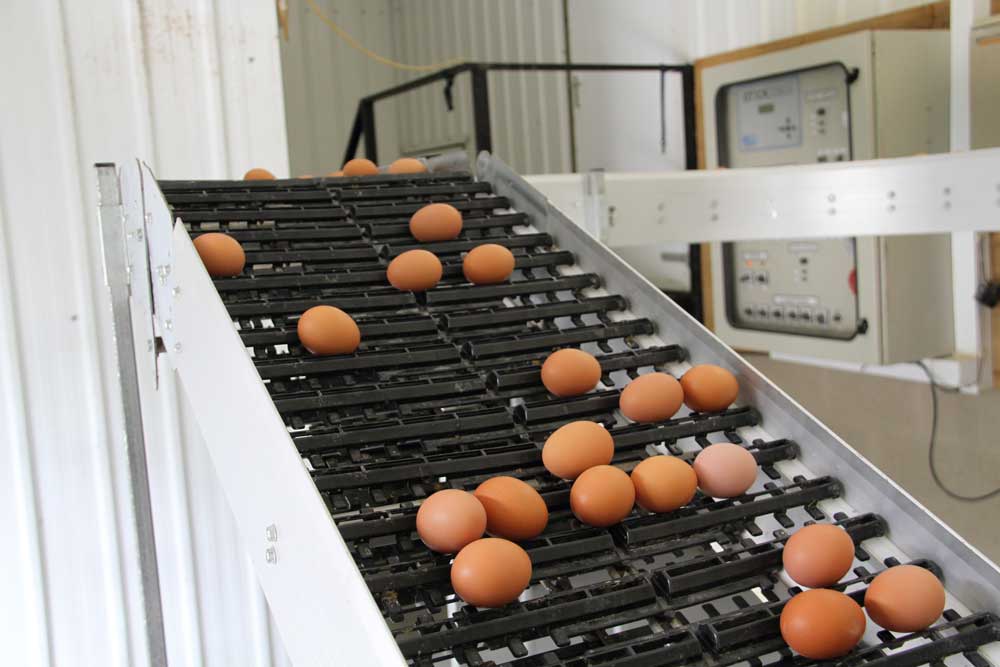Layer farms' output continues to increase
Published on : 5 Jan 2022

Output increased by three per cent in 2020-21
Output on English layer farms increased yet again last year according to the latest farm business income figures released by the Government.According to the data published by the Department for Environment, Food and Rural Affairs, egg producers’ output increased by three per cent in 2020-21, although this was overshadowed by falls elsewhere in the poultry sector. “Average incomes on specialist poultry farms fell to £77,700; increases to egg and crop output and higher income from diversified activities were not enough to offset lower output from poultry meat,” said the authors of the report.The three per cent increase on layer farms was, say the authors, driven by an increase in price following strong retail demand during covid-19 lockdowns and a slight increase in quantity. Egg statistics show that farm gate prices at the end of the first quarter this year were 87 pence per dozen - 15 per cent higher than the 76 pence figure recorded in the first three months of the previous year. Free range eggs were 98 pence per dozen - 13 per cent higher than the first quarter of 2020.In April this year Kantar Worldpanel, the consumer insight specialist, reported that eggs had been doing well during the covid-19 pandemic, with demand up by nearly a quarter.Free range was doing even better, it said, and the market for organic had soared - up by more than 50 per cent in the 52 weeks to February 21 this year. The market for happy egg - Noble Foods’ high welfare label - had more than doubled. Figures for the 12 week period - up to March 21 - showed demand remained strong, said Kantar. The market for all eggs was up by 16.7 per cent and the free range sector was up by more than 22 per cent compared with the same period in 2020.“Without a doubt, eggs have had a phenomenal year and up until now have seen some really dramatic growth,” Kantar told the Ranger.The authors of the farm incomes report said that the £77,700 average income for poultry farms overall in 2020-21 was a 12 per cent fall compared to 2019-20.“Output from birds for poultry meat fell by seven per cent: while prices rose slightly, throughput was lower,” they said. “Crop output rose by 40 per cent, buoyed by increases particularly for spring barley, oilseed rape and sugar beet. Combined, these factors meant agricultural output decreased by two per cent while total agricultural costs were virtually unchanged on 2019-20. Diversified output rose by six per cent, with falls in output from tourism and recreation more than offset by increases to rental income, food processing and retailing.” They added that the results for specialist poultry farms should be treated with caution because of the small sample size and the range of enterprises covered by this farm type. “For example, there are farms producing broilers, turkeys, ducks and geese and for laying flocks the systems cover organic and conventional free range enterprises as well as enriched cages,” they said.The report showed that average farm business income increased across all farm types except general cropping and specialist poultry.On cereal farms, average income increased by 14 per cent to £71,700. “Firm prices helped to offset lower yields for some crops and higher fixed costs. For general cropping farms income fell by 21 per cent to £66,900 with lower input costs insufficient to offset a drop in crop output, the result of reduced yields and areas for crops such as sugar beet and oilseed rape,” said the authors.On dairy farms, average income increased by nine per cent to £92,500, with revenue from other cattle enterprises, which rose by 13 percent, a key driver.On lowland grazing livestock farms, average income nearly doubled to £18,400, driven by a rise in output from cattle and sheep enterprises, which more than compensated for a fall in crop output. For grazing livestock farms in Less Favoured Areas (LFAs) similar drivers resulted in an average income of £33,400, a 46 per cent increase compared to 2019/20. On specialist pig farms, average income increased to £48,000 with firmer prices at the start of the year helping to offset later prices falls and a rise in costs, particularly for feed. The authors of the report said that 2020-21 was a far from typical year, the covid-19 pandemic, challenging weather conditions (the extremely wet winter of 2020 and very dry spring of 2020) and the end of the EU exit transition period some of the influencing factors.